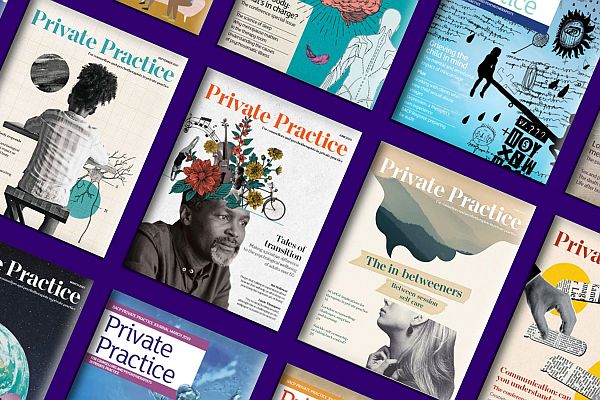A colleague, who recently returned to seeing clients face to face after 18 months of working remotely, told me how immeasurably different the experience had felt, in ways that they hadn’t fully anticipated. Something about being in the embodied presence of their clients within the usual therapeutic container of their consulting room had cast a new and unexpected light on what had been missing from their therapeutic encounters on Zoom.
Yes, they still concurred that, despite their initial doubt and misgivings, they'd been surprised and pleased to find that therapy could still be effective when delivered online. But returning to seeing their clients in person had reconfirmed for them, not only the increased possibility for intimacy when in the physical presence of another, but also the numerous and subtle non-verbal cues that become flattened or go in large part unnoticed when working on screen.
Indeed, all the research from contemporary trauma theory, neuroscience and developmental psychology confirms the interconnection of our body-mind system, such that even counsellors who are trained to deliver primarily cognitive-based therapies understand that not paying attention to non-verbal, symptoms and sensations held and expressed in and through the body inevitably means that a substantial part of the client’s experience will be missed and go unattended to in the work.
So when I hear, as I regularly do through my professional network and from supervisees and the students I teach, that the convenience of working online (the removal of travel time for those who don’t have a consulting room at home, for example) is preferable to returning to face-to-face work, I worry that, in our rush to adapt and respond to the requirements the pandemic has forced on us, we might risk sleepwalking into a world in which online therapy becomes the norm, and forgetting what we had previously held dear about the importance of embodied presence in our work.
This point about the interrelation of neurology, biology and psychology is the theme of our lead feature, How the body responds to racism by Alexander Oviawe, in the September issue of Private Practice. A former physiologist with a special interest in psychophysiology and technology, Alexander works with the University of East London to explore the use of heart rate variability (the fluctuation of the length of heartbeat intervals) and emotional regulation.
Heart rate variability, or HRV as it is more commonly known, affects the ability of the autonomous nervous system to respond to a variety of physiological, psychological and environmental stimuli via the sympathetic and parasympathetic branches of the autonomic nervous system. It's associated with impaired regulatory and ANS functions, which reduces one’s ability to cope with stress and leads to emotional dysregulation.
It doesn’t require a big leap in thinking therefore to understand that people who are in a constant state of ANS arousal, as a result of trauma, are at higher risk of experiencing stress-related mental and physical conditions. And, as we know from the research, the physical presence of a co-regulating other can help bring a traumatised client back into their window of tolerance.
This, as Alexander argues, is especially true for minorities who have experienced perpetual racial aggressions, whether micro (in the workplace and public experience) or macro – such as verbal or physical threats or what comes of systemic racial imbalances. And, of course, without meaning to detract from the black, Asian and minority ethic (BAME) population on whom he importantly focuses, what he writes has implications for all traumatised individuals and therefore for therapeutic practice.
So, let’s please not throw the baby out with the bathwater when we reflect upon when and if we return to the room with our clients. There’s place, of course, for online therapy, but not at the expense of being in the room.
Read more...

Private Practice
For counsellors and psychotherapists in private practice. The quarterly professional journal of BACP Private Practice division.

BACP Private Practice division
BACP Private Practice supports members who work in, or are about to embark upon, counselling or psychotherapy in private practice.

Blogs and vlogs 2021
News, views and updates from our staff, members and counselling clients
Views expressed in this article are the views of the writer and not necessarily the views of BACP. Publication does not imply endorsement of the writer’s views. Reasonable care has been taken to avoid errors but no liability will be accepted for any errors that may occur.
